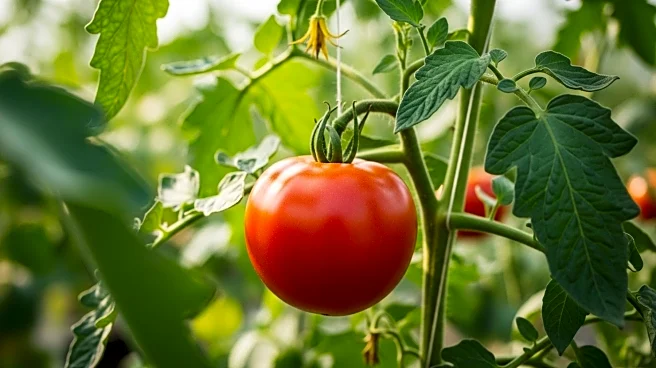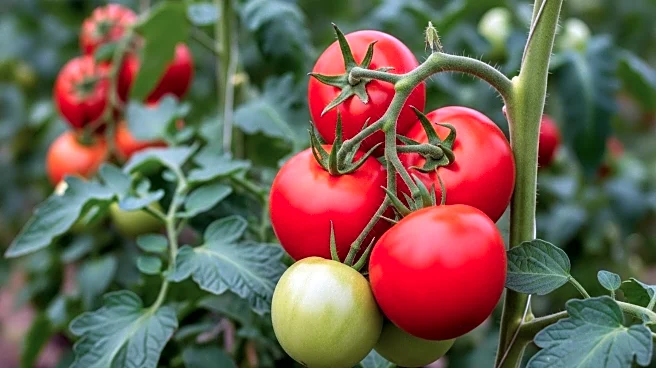What is the story about?
What's Happening?
The Ministry of Agriculture and Land Reclamation in Egypt has issued a statement refuting claims circulating on social media that tomatoes in the market are being treated with 'ethryl' to accelerate ripening and enhance their color. The Ministry clarified that the white coloration sometimes observed inside tomatoes is due to natural and agricultural factors, such as high temperatures during ripening, which affect the production of lycopene, the pigment responsible for the red color in tomatoes. Additionally, nutritional imbalances, including deficiencies in potassium and calcium or excess nitrogen fertilization, can contribute to the development of white areas inside tomatoes. The Ministry assured consumers that tomatoes affected by these conditions are safe to eat and pose no health risks.
Why It's Important?
This clarification from the Ministry is significant as it addresses public concerns and misinformation regarding food safety and agricultural practices. By dispelling rumors about chemical treatments, the Ministry aims to maintain consumer confidence in the safety of agricultural products. The statement also highlights the importance of relying on verified information from official sources to prevent unnecessary panic and misinformation. This incident underscores the broader issue of how misinformation can spread rapidly on social media, potentially impacting public perception and trust in food safety standards.
What's Next?
The Ministry has urged media outlets and social media users to verify information before sharing it, emphasizing the need for accurate reporting to prevent the spread of misinformation. It is likely that the Ministry will continue to monitor public discourse and may implement further educational campaigns to inform consumers about agricultural practices and food safety. Additionally, ongoing communication with the public through official channels may be necessary to reinforce trust and transparency in agricultural processes.
Beyond the Headlines
The incident highlights the challenges faced by agricultural authorities in combating misinformation in the digital age. It raises questions about the role of social media in shaping public perceptions and the responsibility of users to critically evaluate the information they encounter. This situation also points to the potential need for more robust public education initiatives to improve understanding of agricultural practices and food safety.
AI Generated Content
Do you find this article useful?













